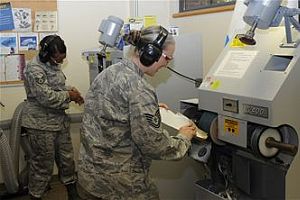Orthotics are medical devices that help support and realign a part of the body. Orthotics can be made for many different body parts, but foot orthotics are among the most common. In simplest terms, these are devices worn inside a shoe to help support or realign the feet, correct imbalances or foot mechanics problems, or to accommodate and stabilize foot deformities. Read on to learn the answers to some common questions about custom foot orthotics.
What’s the difference between custom foot orthotics and shoe inserts?
While both devices are inserted into shoes, shoe inserts are typically non-prescription, pre-packaged foot support devices. Shoe inserts come as arch supports, insoles, heel liners and foot cushions, and can be very helpful for flat arches, general cushioning, and support. However, they are not designed to correct poor foot mechanics or resolve long-term alignment and posture problems. In fact, any device that is not doctor-prescribed and designed specifically for your own feet (including “custom-made insoles”) is not a custom orthotic. It’s a shoe insert.
Custom foot orthotics are meant to be worn by you and you only. They will closely match the contours of your own feet and will accommodate your unique way of moving. They can only be created based on a thorough medical evaluation of your feet by a physician, who will prescribe orthotics based on the structure and condition of your feet and appropriate for your individual lifestyle and health goals.
What kinds of custom orthotics are available?
There are two main kinds of custom orthotics: functional and accommodative.
Functional orthotics are intended to restore normal movement. They can help relieve pain and be useful in treating certain injuries such as tendinitis or shin splints. They are often rigid devices that are created from plastic or graphite. Accommodative orthotics, by contrast, are designed to provide cushioning for problems such as calluses, ulcers, or other uncomfortable conditions. For example, diabetics often have debilitating foot problems that can be helped with accommodative orthotics.
When should you see a chiropractor about custom orthotics?
For daily support and cushioning of your feet unrelated to any underlying health problem, you may be satisfied with the use of over-the-counter shoe inserts that are available at many shoe stores and pharmacies. However, if you’re experiencing ongoing musculoskeletal fatigue, discomfort or pain—particularly in your feet, ankles, knees, hips or back—you may have a more serious structural issue that can be effectively addressed with foot orthotics. To find out if this is the case, it’s a good idea to ask your chiropractor for an examination of your feet as well as an assessment of your standing, walking and running mechanics.
Chiropractic physicians are experts in diagnosing and treating conditions related to the musculoskeletal and nervous systems, and many have special training and experience evaluating lower extremity biomechanics. With the help of modern diagnostic technologies, including foot scanners and gait analysis equipment and software, he or she will be able to identify structural foot problems and recognize how and where your body may be compensating for them. Imbalances and misalignment that result from structural foot problems can cause pain and dysfunction elsewhere in the body over time and may become worse until the underlying issue is addressed.
Remember—your musculoskeletal health is built from the ground up. Depending on your situation, custom foot orthotics can play a key role in relieving pain and restoring proper alignment. Call or visit our office to learn more!

